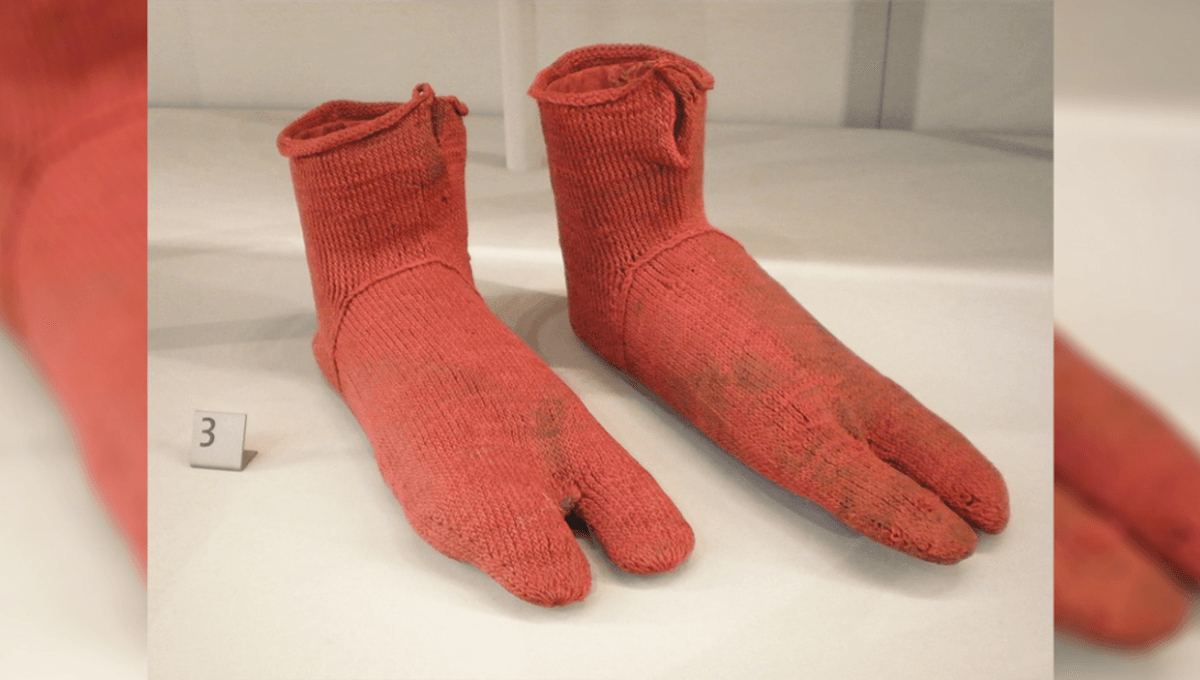
Socks and sandals are as divisive in the modern era as pineapple on pizza, but according to a handmade pair made 1,600 years ago, we’ve been rocking the look for eons. Now on display in London’s Victoria & Albert Museum labeled as Coptic socks, they originate from Egypt and are thought to date back to the fourth to fifth century.
The stylish socks were excavated at the end of the 19th century, and if you’re thinking that the people back then had weird-shaped feet, there’s a reason for their lobster-like design. They have a divided toe because they were crafted specifically for sandal-wearing, demonstrating a degree of swagger you just don’t see these days. The daytime would be more of a sandals-only vibe due to the climate, but at certain times of the year, the nights would be cooler making sandal socks a desirable accessory.
As well as their unique style, the Coptic socks are notable for the way in which they were made. Nålebinding was a textile technique that’s thought to predate knitting and crochet. It involved using a one-eyed needle to loop thread to create flexible fabric, making it a popular choice for mittens, socks, and hats.
It might sound and even look a bit like knitting, but seasoned knitters will recognize that the process involved was actually pretty different.
“While knitting and crochet use a continuous thread, the thread length is restricted in [Nålebinding] as the needle carrying the working end needs to pass through previously-made loops in the fabric structure,” reads a 2017 paper on Nålebinding socks. “For this reason, [Nålebinding] creates items that can withstand heavy use and do not run in case of thread breakage.”
In fact, it’s more comparable to sewing than knitting as each stitch is made by pulling the entire length of thread through before tightening the loop to form the next stitch. For this reason, it’s slow-going and comes with the disadvantage of only being able to be created from a limited stretch of thread. A lengthy process but one with impressive longevity, as these 1,600-year-old Coptic socks look in better nick than half of those in our sock drawer.
So, the next time you find yourself looking down on the socks and sandals combo, just remember: there was a time when people went to great lengths to achieve that kind of high fashion.
[H/T: Open Culture]
Source Link: 1,600-Year-Old Egyptian Socks Made For Sandals Look A Little Lobster-ish